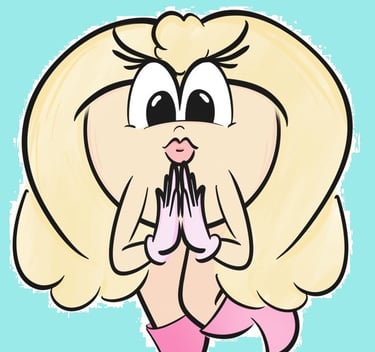
Virtual Boy Wario Land
Wario's VB adventure is a decent into crimson madness. It's the one true sequel to the Game Boy original. And it's one of the system's greatest games.
Virtual Boy Wario Land
Platform: Virtual Boy

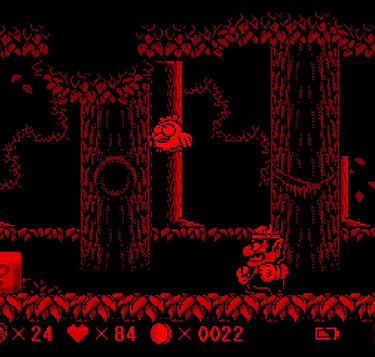
What defines Mario? His early hijinks with Donkey Kong? His later face-offs with Bowser? Or, later still, his rivalry with a certain mischievous doppelganger—that twisted caricature known as Wario?
Indeed, it’s the latter personage that really swelled and held sway in the latter 1990s. By then, Donkey Kong had become largely divorced from the plumber’s proceedings with his own Donkey Kong Country line of games. Bowser had also become scarce, if only because the mainline Mario game itself had become rare; after Super Mario World’s debut in 1990, there wouldn’t be another conventional entry into the series until 1996’s Super Mario 64. After that, it’d be another six-year gap until Super Mario Sunshine dawned in 2002.
But though the ‘90s proved to be a strange furlough for the hero, Mario’s presence was still felt through a similar, yet very different character. Needing an antagonist for their Super Mario Land 2 Game Boy project, Nintendo’s R&D1 team conceived of a figure both manly but gross, both pathetic but majestic…a jealous, cantankerous soul who nevertheless still possessed a kind of charm. Wario was the subverted, inverted version of Mario, and thus, was the perfect rival and foil. So much so, he even transcended his nemesis for a time, receiving his own “Wario Land” series of games that offered, like the twisted character himself, an alternate—even subverted—take on the Mario ethos.
Nintendo was a different company in those heady 1990s, stitched by a patchwork of teams defined by their own visions and design predilections. Wario was the culmination of this more free-form era in which corporate oversight was minimized, where company-wide homogeneity hadn’t yet become the overriding maxim. As Nintendo rolled through its NES, SNES, and N64 platforms, the humble Game Boy remained in the background, staid but safe, and thus left protected by the would-be meddlers on Nintendo’s higher floors. Such freedom fueled R&D1’s creative drive, helping it realize a number of properties, spin-offs, and sequels marked with a certain “quirk” often missing from Nintendo’s more mainline, high-profile titles. Wario, himself unscrupulous and unorthodox, was born from this versatile, less-reverent machine.
It’s no coincidence, then, that modern Nintendo has been resistant to creating more wacky, tacky properties, both within Mario’s universe and without. The plumber’s persistent roster of bad-boy adversaries has remained consistent since Wario’s introduction in 1992; with the possible exception of Bowser Jr., Bowser, Donkey Kong, and Wario still comprise Mario’s main bevy of baddies. Except…Wario now takes a distant third in the trio, excluded while both Bowser and DK feature prominently in The Super Mario Bros. Movie, at the Nintendo World theme parks, and in several high-profile games. Wario, who once starred with Mario, Luigi, and Yoshi in Super Mario 64 DS, who once got games like Wario World and Wario Land: Shake it!, has now been minimized to WarioWare sequels and appearances in various Mario-themed sports and multiplayer games.
Why the sudden apathy for a character who once, in lieu of a proper 1990s Mario sequel, gave gamers their platforming, brick-busting fix? Money, probably—it’s clear that Wario games don’t sell in the numbers of the great Super Mario. But another reason might just be one of jealousy; after all, the greedy, garlic-crunching anti-hero wasn’t the brainchild of the esteemed Shigeru Miyamoto, but the invention of the now dismantled R&D1. Clearly, Miyamoto wants his own creation—the also brawny, irascible Donkey Kong—to be at the forefront of the company’s legacy. In his eyes, Wario, that weird pretender from the ‘90s, is barely official.
But no matter. Wario has his fans, and all six of his leading games are excellent in their way: Wario Land - Super Mario Land 3, Virtual Boy Wario Land, Wario Land 2, Wario Land 3, Wario Land 4, and Wario Land - Shake It! The most obscure of these, however, is the Virtual Boy effort, a game that would have surely become a classic had its platform not died so tragically, so fast.
…
Wario Land VB is actually the second game released in the six-strong series, being essentially a direct follow-up to the “Super Mario Land 3” Game Boy original where Mario was dumped for a heavier, crunchier, more hard-hitting star. Where Mario ran like an Olympian, jumped like an acrobat, and fell like a feather…Wario plodded, Wario thumped, Wario battered--Wario would rather bully his way through obstacles than hurdle them. Mario followed the preset path while Wario forged his own.
Fans can debate whether this slower approach trumps Mario’s more agile own, but it did befit the poor Game Boy screen, which in its original incarnation was prone to severe blurring whenever a character dared a little speed. Wario plodded while Mario jogged, trotted while Mario sprinted. In a sense, Wario’s creation was one of circumstance.
The game was fun, too, offering a unique take on the then-tired platforming experience that so defined both the 8 and 16-bit generations. Even now, as of 2024, there isn’t a platformer that quite feels like Wario, that quite captures the satisfying crunch and smash as he charges into walls or butts a helpless enemy off the screen. It’s brutal. It’s fun. It’s Wario unleashed.
The Game Boy title’s success soon spawned a clever successor for Nintendo’s ailing Virtual Boy. The better hardware, despite the tacky red on black, gave Wario a level of detail and animation that even surpassed the Mario games of the time. The gameplay got less of an upgrade—Wario still attacks by shoulder-ramming himself into a host of obnoxious enemies as he avoids traps and uncovers treasures. The same powerups also return; the eagle hat allows Wario to zip through the air in a limited bee-line of flight, the dragon hat gives him a flame-thrower enemy-torcher, and the bull hat greatly enhances the brute’s shoulder charge. The “King Dragon Hat,” which combines elements of the other three enhancements, can also be attained…making Wario’s foes a cinch to incinerate.
And, in another curious holdover from the Mario games, Wario shrinks, crinkling into a pint-sized tyke when struck by a foe. It’s an odd phenomenon that begs the question regarding who Wario really is—a brazen muscleman or a pint-sized dwarf? Future Wario games, just like the later 3-D Mario titles, would remove the growing/shrinking dynamic altogether. Here, it remains an awkward stumble in the character’s evolution.
Where Wario Land VB does does truly excel over its predecessor is in its art direction, trading the somewhat cutesy, Mario-esque proceedings of the first game with something decidedly creepier. Sharks attack not with open jaws, but with chainsaws jutting from their eye sockets. Grimy, spear-wielding ogres patrol the trenches of stench-drenched sewers. Phantom masks weave dangerously and deviously through galleries of haunted art. Yes, the game is unorthodox even by series’ own twisted standards.
The VB’s infamous red on black graphics certainly enhance (exacerbate?) these grim proceedings, making one wonder if the system’s ghastly two-tone array might have subconsciously influenced the developer’s nightmarish direction. Indeed, Wario shifts through the game’s fourteen stages as if slowly ascending from hell itself, riding an elevator up level after level with the occasional boss waiting in-between. These guardians are devils themselves—feisty confrontations far more taxing than the traditional Mario boss encounter. And once the entire 14-floor gauntlet is complete, a “good” ending still isn’t guaranteed. Certain conditions must be met for Wario to keep his treasures and find a proper way home.
Of course, the game also flirts with the system’s “virtual” elements—that 3D-depth effect showcased here by casting Wario between background and foreground via specialized tiles. Although not exactly revolutionary, this shifting between planes offers an added element of exploration that, years later, would be used in everything from Donkey Kong Country Returns to Super Mario Bros. Wonder. If the Virtual Boy died without leaving a legacy, at least one of its games still proved influential.
Which is also why Virtual Boy Wario Land stands as the most tragic entry of the series, abandoned to a doomed platform with no hint of rerelease. The 3DS would have been the perfect system to reclaim and remaster this lost treasure, but Nintendo seems happy to let the title die. The VB was an embarrassment in the company’s eyes. And the games—even the good ones—are just reminders that even the mighty Nintendo is fallible.
The future of Wario remains unclear; he lacks a champion at Nintendo headquarters to resurrect his cause, to remind people why, once upon a time, he was a convincing alternative to the plumber. Now, he’s the microgame-collection guy, with all recollection of his glorious past relegated to spotty rereleases of his Game Boy titles. Virtual Boy Wario Land is good. System-defining. Even system-redeeming. It's the product of great talent and great love. And yet, it’s a love that no longer exists at corporate Nintendo.
Consider this one lost.--D
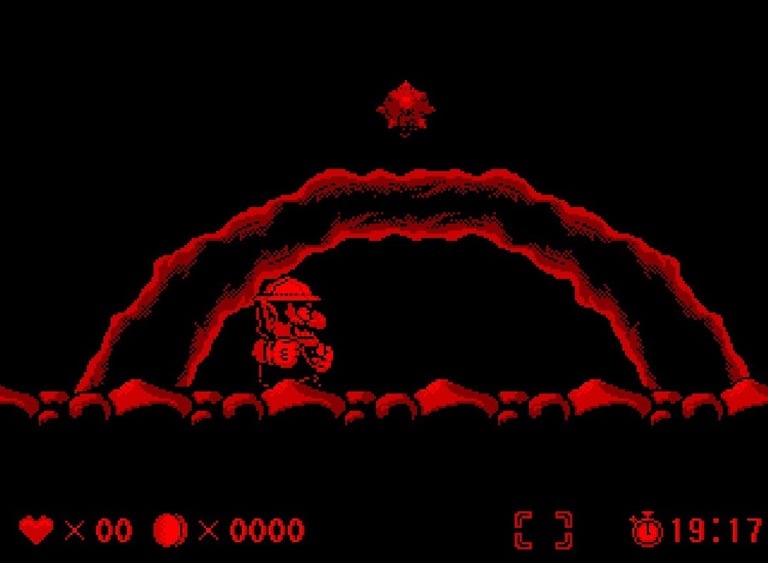

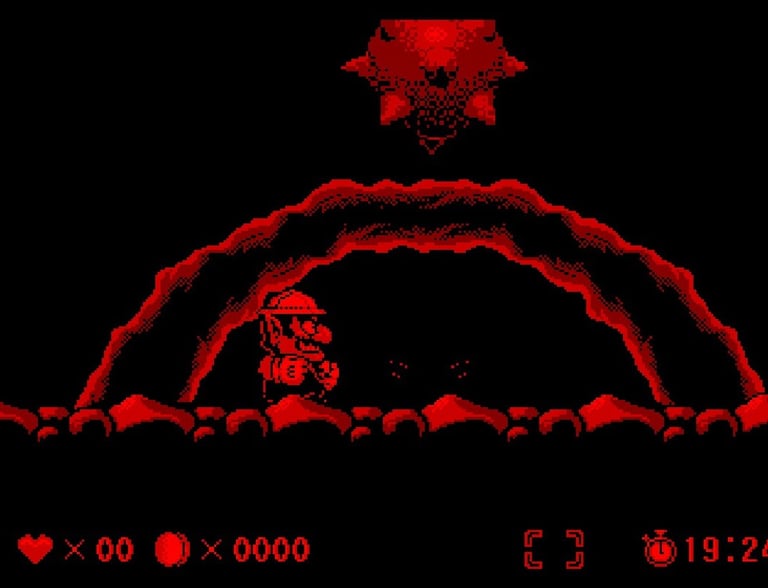



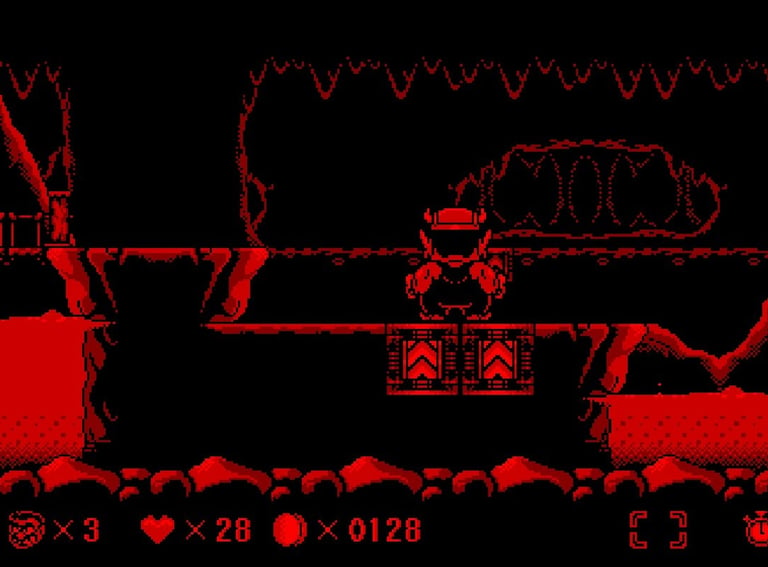

Wario moves between the two planes of play via specific jump pads. This front/rear dynamic would be later revisited in everything from Donkey Kong Country Returns to Super Mario Bros. Wonder.
Publisher: Nintendo
Developer: Nintendo (R&D1)
Release: 1995
Genre: Platformer
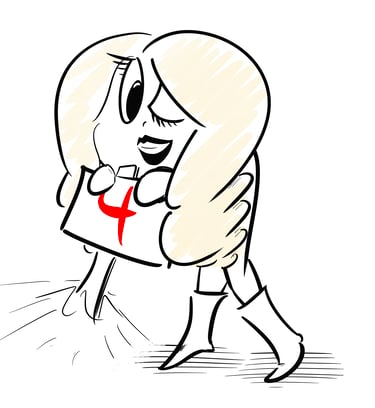


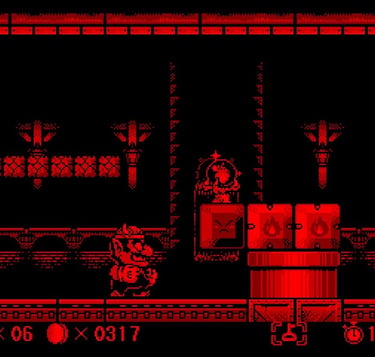

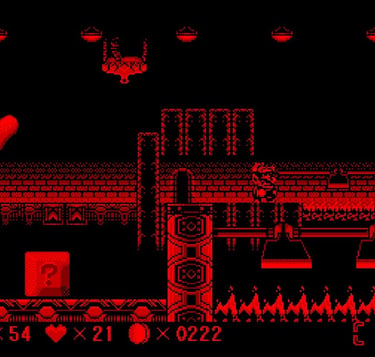
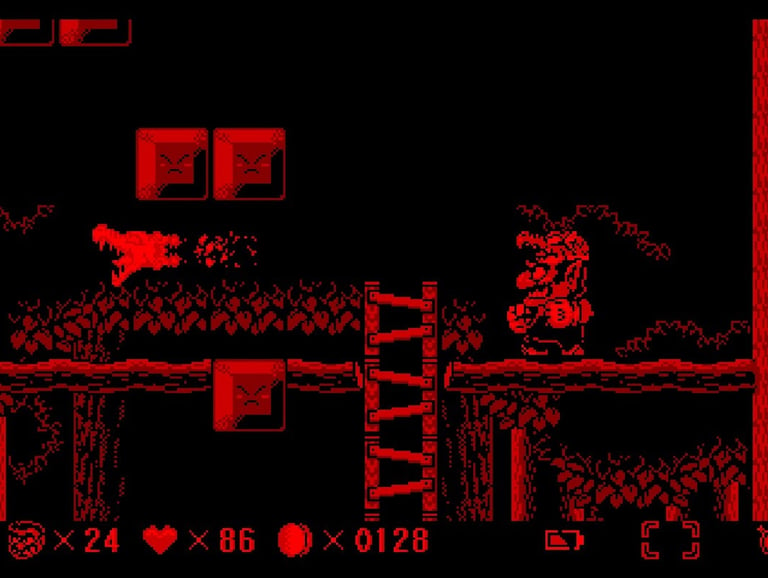


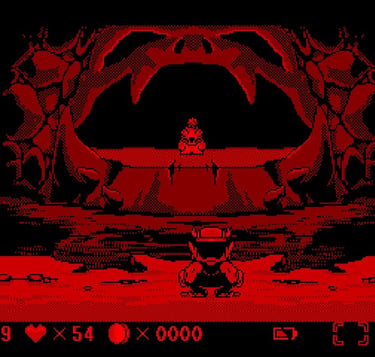

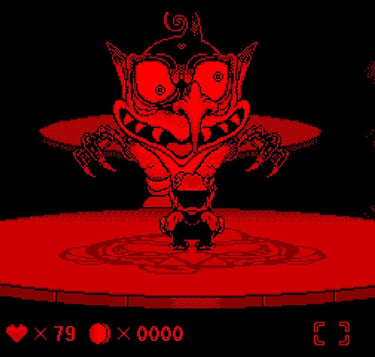
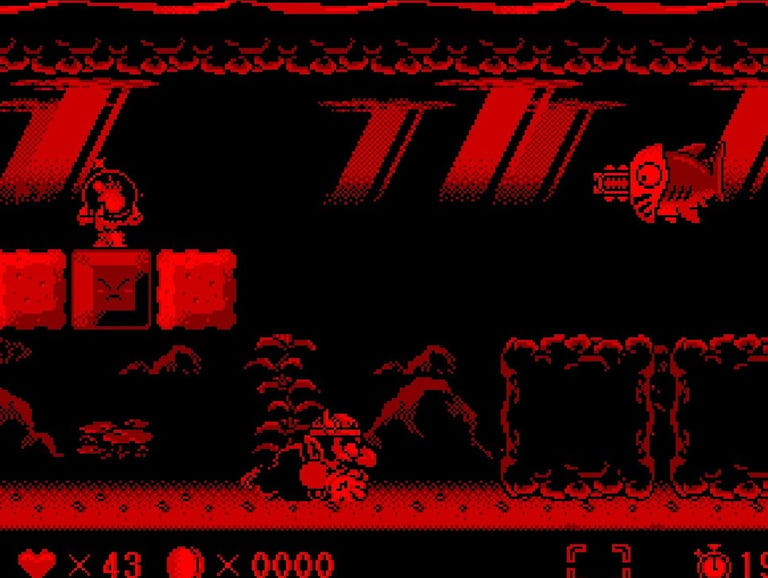


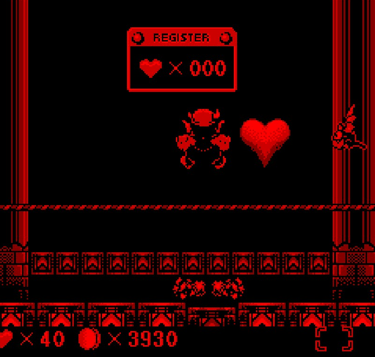
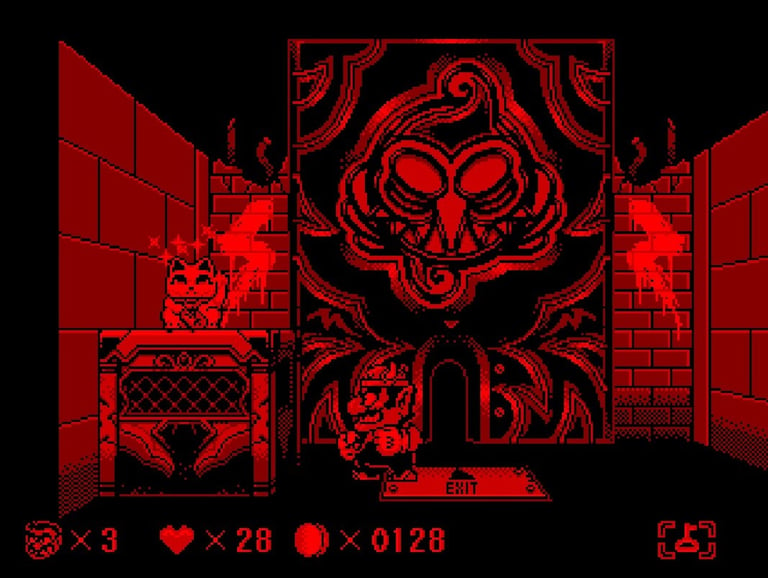

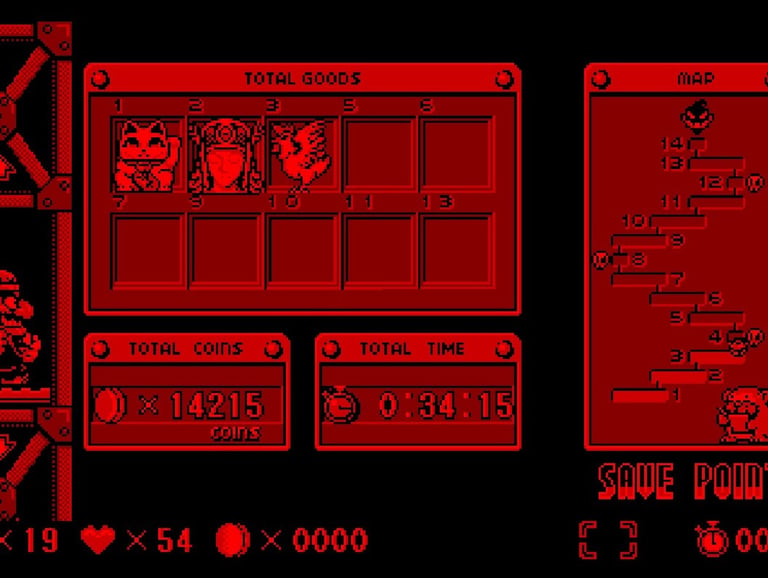



Being a Virtual Boy game, Wario Land has its share of 3-D effects and gimmicks, including this spiked ball which sways in and out of the background/foreground.
Similar to games like Metroid, certain blocks cannot be destroyed without the proper item or power. The so-called King Dragon Hat combines all three of Wario's usual powerups.
Wario Land's bosses prove unusually tricky to fell compared to the typical Mario game. Players will likely fail on their first few tries.
The game is undeniably creepy on occasion, as the mask-wearing, chainsaw-out-the-eye sharks clearly indicate.
Bonus games are available in-between stages, hosted by an inexplicable beaver. The "heart" game involves Wario using jump pads to spring back-and-forth, collecting hearts and diamonds as they fly from right to left.
A key must be procured to complete each level, but ten treasures must be found to achieve the best ending. The coins collected and playtime spent also contributes to the specific conclusion players will receive.
Contact: lostnostalgiaproductions@gmail.com
Website: www.lostnostalgia.com
Like what we're doing? Please consider throwing us a dollar into our Patreon page's tip jar!
